If you’re new to skating, the big question is: should you start with inline skates or roller skates? Here’s the deal:
- Roller skates (quad skates) are easier for beginners. Their wider, stable base makes balancing a breeze. They’re perfect for indoor rinks and casual skating.
- Inline skates (rollerblades) are built for speed and outdoor use. They’re less stable, require stronger ankle control, and have a steeper learning curve.
Quick Comparison
| Feature | Roller Skates | Inline Skates |
|---|---|---|
| Balance & Stability | Easier to balance, stable design | Requires more balance, less stable |
| Turning | Quick and sharp turns | Wider turning radius |
| Braking | Toe stops (front) | Heel brakes (rear) |
| Best For | Indoor rinks, artistic skating | Outdoor paths, fitness, speed |
| Learning Curve | Beginner-friendly | Tougher to master |
If you’re looking for stability and confidence as a beginner, go with roller skates. But if you’re ready to challenge yourself and want outdoor speed, inline skates might be your pick. Keep reading for tips, pros, and how to choose the right pair!
Which skates are easier Roller skates or Inline Rollerblades? Instructor compares the differences.
Balance and Stability: Which Design Works Better?
When it comes to balance and stability, the design of inline skates and roller skates plays a huge role - especially for beginners. The way their wheels are arranged directly impacts how easy (or tricky) it is to stay upright. Let’s break down how each design affects stability.
Roller Skates: A Confidence Booster for Beginners
Roller skates use a classic quad-wheel setup, with two wheels in the front and two in the back. This creates a square-shaped base under each foot, giving you a shorter and wider wheelbase. Thanks to this design, roller skates offer excellent side-to-side stability and more contact with the ground, which is perfect for new skaters. This extra stability is a game-changer for beginners - it helps you feel more secure whether you’re moving slowly or just standing still.
Inline Skates: A Bit Trickier to Master
Inline skates, on the other hand, have 3–5 wheels lined up in a single row, much like the blade of an ice skate. While this setup is fantastic for speed and smooth forward motion, it’s not as beginner-friendly. Balancing on that narrow line of wheels can feel wobbly, especially at low speeds or when you’re standing still. If your balance slips, it can be uncomfortable and discouraging. This steeper learning curve makes inline skates a tougher choice for those just starting out, compared to the more forgiving design of roller skates.
Control and Steering: Learning to Move and Stop
Once you’ve got your balance down, the next step is figuring out how to control your movement and, most importantly, how to stop safely. Roller skates and inline skates handle turning and braking in very different ways, and these differences can shape your early skating experience. Let’s break down how each type of skate handles steering and stopping.
Turning and Steering: Roller Skates vs. Inline Skates
Roller skates are known for being easier to turn and maneuver. Thanks to their shorter wheelbase, they’re great for quick pivots and sharp turns, making them a favorite for artistic skating or cruising around a roller rink. On the other hand, inline skates are built for straight-line speed. With their longer frame and wheels arranged in a single line, turning takes a bit more effort. You’ll need to lean into your turns and use wider arcs, which can feel tricky if you’re just starting out and want more immediate control.
Stopping Methods: Toe Stops vs. Heel Brakes
Stopping is where the two skate styles really stand apart. Each uses a completely different braking system, and both come with their own learning curve.
Roller skates are equipped with toe stops, also called T-brakes, which are positioned at the front of each skate. To stop, you lift your toes and press the rubber stopper into the ground. Toe stops are versatile - they not only help with braking but can also assist with balance and even walking. Kids often find them intuitive since a slight forward tip activates the brake. However, getting the hang of toe stops does require some practice to master the reach and control needed.
Inline skates, on the other hand, usually come with a heel brake located at the back of one skate (most often the right one). This system is pretty straightforward: you extend the leg with the brake forward, lift your toes, and press the brake pad against the ground. For beginners, inline skates with a heel brake are a smart choice since they offer a safer and more natural way to control your speed.
| Braking System | Location | Best For | Learning Difficulty |
|---|---|---|---|
| Toe Stops | Front of the skate | Quick stops, balance help, tight spaces | Moderate – requires toe control |
| Heel Brakes | Rear of one skate | Gradual speed control, straight-line stops | Easy – follows natural motion |
Toe stops give you quick maneuverability and versatility, while heel brakes make slowing down feel more intuitive. The right choice depends on your skating goals and style.
Where to Use Each Type: Indoor and Outdoor Options
The type of skates you choose depends a lot on where you plan to use them. The surface and environment play a big role in how well your skates perform, especially if you're a beginner. Understanding these differences can help you pick the right skates for your favorite skating spots.
Roller Skates: Best for Indoor Fun and Precision
Roller skates are a great fit for indoor settings. Thanks to their four-wheel quad design, they create a stable, square base that works like a charm on smooth surfaces like skating rinks, dance studios, or gym floors. The wider wheels give you a solid grip and a cushioned feel, making indoor skating both comfortable and enjoyable.
Roller rinks are where these skates really shine. The polished floors let the quad wheels glide effortlessly while still giving you great control. Whether you're into artistic skating or dance routines, roller skates are perfect for tight turns and smooth maneuvers. The front toe stops are a game-changer, too - they make pivots, spins, and quick stops super easy, which is ideal for creative moves.
Their compact design also makes them great for agility. If you're navigating a busy rink or trying out intricate footwork, roller skates offer the control and stability you need. Whether you're just starting out or working on advanced dance steps, these skates are built for precision on indoor surfaces.
Inline Skates: Made for Outdoor Speed and Fitness
Inline skates, on the other hand, are built for the outdoors. With a single line of 3–5 wheels, they reduce friction and let you hit higher speeds, making them perfect for outdoor paths, sidewalks, and trails. This design also helps them handle different outdoor surfaces while keeping up the momentum.
If you're into fitness or commuting, inline skates are a solid choice. They're great for straight-line skating and give you an excellent cardio workout. The longer frame and wheel setup make them ideal for maintaining speed over long distances, whether you're skating for exercise or heading to work.
While inline skates can work indoors - like for inline hockey or artistic routines - they need more space because of their larger turning radius. Plus, the forward-backward balance they require might feel a bit tricky on indoor surfaces, especially at slower speeds common in rinks.
| Environment | Roller Skates | Inline Skates |
|---|---|---|
| Indoor Rinks | Excellent – stable, smooth turns, and easy maneuvers | Suitable for hockey, but larger turning radius is a factor |
| Outdoor Paths | Best on very smooth surfaces | Excellent – designed for speed and long-distance skating |
| Dance/Artistic | Perfect – precise control for tight moves | Possible, but needs more space |
| Fitness/Exercise | Moderate – takes more effort to keep up speed | Excellent – efficient and built for high-speed workouts |
When it comes down to it, the choice depends on your surface and purpose. Roller skates are all about stability, artistic flair, and fun on smooth indoor surfaces. Inline skates, on the other hand, are all about speed, endurance, and outdoor adventures. Knowing these differences can help you pick the perfect pair for your skating goals.
sbb-itb-17ade95
Best Beginner Models and How to Choose Skates
Picking the right skates as a beginner can make all the difference in having a fun and safe skating experience. You’ll want skates that strike a balance between comfort, support, and safety. Snowfeet* models are a great option, offering solid support paired with sleek designs, which makes them a standout for beginners compared to more traditional choices. Let’s break down how to find the perfect pair and what features to look for to make learning smooth and enjoyable.
How to Pick the Right Skates
Start with the fit - this is key. Your skates should feel snug but not tight, leaving about a thumb’s width of space between your longest toe and the tip of the boot. Avoid going too big, as loose skates can throw off your balance and make skating harder than it needs to be. Snowfeet* skates are designed with precision fits to cater to various skating environments, which is a big plus for beginners.
Think about where you’ll be skating most. If you’re sticking to indoor rinks, look for skates that emphasize stability and support. For outdoor adventures, durability and comfort should take priority. Matching your skates to your skating environment will not only make learning easier but also help you gain confidence as you practice.
Safety is non-negotiable. As Richard Clark Culpeper wisely advises:
"Whatever you end up on, be sure to wear your personal protective equipment (PPE), including helmet, wrist guards, knee pads, elbow pads, and no bare skin exposed that you want to protect from road rash when you go down."
Using the right protective gear can go a long way in preventing injuries as you work on basics like balancing, stopping, and turning. Many Snowfeet* models come with added safety features tailored for beginners, giving you extra peace of mind. Pro tip: try on skates later in the day when your feet are slightly swollen - this helps ensure the best fit. With a solid fit and proper gear, you’ll set yourself up for success as you tackle those first steps on skates.
Basic Skating Skills: A Beginner's Guide
Got your skates on and ready to roll? Great! Learning the basics step by step is the best way to build confidence and stay safe as you get the hang of skating. Whether you're rocking roller skates or inline skates, these core techniques will set you up for success.
How to Balance and Stand on Skates
Start where the wheels won't surprise you - like on a carpet or grass. These surfaces keep your skates from rolling, so you can focus on getting used to the feeling of standing in them. Place your feet shoulder-width apart, bend your knees slightly, and keep your weight low. This stance helps you stay balanced and steady.
Posture matters! Keep your body centered over your feet and avoid leaning too far forward or backward. Oh, and resist the urge to stare at your skates - look ahead instead. Practice standing still and shifting your weight from one foot to the other to get comfortable.
Once you're ready to move onto a smooth surface, grab onto a wall or railing for support. Take small, deliberate steps rather than trying to glide right away. If you're in inline skates, you might notice they demand a bit more ankle control, so take your time.
How to Stop: Using Toe Stops vs. Heel Brakes
Stopping safely is a must before you start picking up speed. The way you stop depends on whether you're using roller skates or inline skates, so let’s break it down.
For roller skates, dragging your toe stops isn’t the best idea - it’s unstable and can wear them out quickly. Instead, practice techniques like the plow stop, T-stop, or turn-around stop. These give you more control and keep your toe stops in good shape.
Inline skates, on the other hand, usually come with heel brakes. To use them, lift your toes slightly and press down on the brake pad with your heel. It might feel a bit wobbly at first, but with practice, you'll nail the balance needed for smooth braking.
How to Turn and Change Direction
Turning is where things start to get fun, but the technique depends on your type of skates.
Roller skates are easier to turn with because of their shorter frame. Their design lets the wheels naturally follow your movements, making them great for tight spaces and slower speeds. To turn, use a gentle side-to-side motion or try crossovers as you get more comfortable.
Inline skates, though, are a bit different. Their longer frame means they need a wider turning circle. Start with simple moves like step turns or monster turns. Once you’re feeling confident, you can try more advanced techniques, such as parallel turns, crossovers, or heel pivots. Inline skates often work best with a slight forward lean during turns for better control.
Wherever you practice, make sure it’s a safe, open space. Turning and stopping take time to master, so don’t rush it. With patience and practice, you'll build the muscle memory you need to skate smoothly and confidently.
Side-by-Side Comparison: Roller Skates vs. Inline Skates
Here's a straightforward breakdown of the main differences between roller skates and inline skates, especially for beginners.
Key Comparison Factors
| Factor | Roller Skates | Inline Skates |
|---|---|---|
| Balance & Stability | Provide more stability with a wider wheelbase and four wheels touching the ground | Require better balance due to a single line of wheels, which can feel less steady at slower speeds |
| Ankle Support | Typically offer more ankle support, which is helpful for beginners developing stabilizing muscles | Offer less ankle support, relying more on the skater's control and core strength |
| Learning Curve | Easier for beginners because of their stable design | Have a steeper learning curve, demanding better balance and coordination |
| Fall Risk | Shorter front-to-back wheelbase increases the chance of tipping backward | Narrow wheel setup makes sideways falls more likely |
Roller skates are often the go-to choice for beginners thanks to their stability and added ankle support. Inline skates, on the other hand, challenge skaters to develop stronger balance and core control from the outset. For example, Snowfeet* roller skates highlight these beginner-friendly features with excellent stability and support, making them a solid option for those just starting out. Overall, roller skates tend to be the more beginner-friendly pick.
Final Answer: Which Skates Work Best for Beginners?
For beginners, roller skates take the top spot. Thanks to their wider wheelbase and four-wheel design, they offer a more stable platform, which is perfect for building confidence. Many models also provide extra ankle support, making it easier for new skaters to develop leg strength and coordination. Roller skates are great for indoor rinks, casual outdoor skating, and mastering basic moves like turning and stopping - without as many tumbles. Plus, the toe stop braking system tends to feel more natural compared to heel brakes.
That said, inline skates have their place too, especially if your focus is on outdoor fitness, speed, or longer distances. They demand better balance and core strength from the get-go but shine on pavement and uneven surfaces, offering a smoother ride. While they may take more effort to master, inline skates can be a solid choice for those willing to invest the time.
When choosing skates, brand quality matters too. Snowfeet roller skates are a standout option, praised for their stability and comfort. Unlike traditional snow sports gear, which often comes with pricey lift tickets and weather restrictions, these skates let you enjoy year-round fun right in your neighborhood.
FAQs
What’s the difference between braking on roller skates and inline skates, and which is easier for beginners?
The key difference in braking techniques lies in the skate design. Roller skates come with a toe stop at the front, while inline skates are equipped with a heel brake at the back. Inline skates also offer more advanced stopping options, like the T-stop or plow stop, which can feel more adaptable as you build confidence on wheels.
For beginners, roller skates might seem easier at first because their wider base provides extra stability. That said, many new skaters quickly adapt to inline skates, especially with beginner-friendly designs that make braking simpler. In the end, it all comes down to what feels right for you. Trying both types is the best way to figure out which one suits your comfort and style.
How do indoor and outdoor surfaces affect the choice between roller skates and inline skates for beginners?
The surface you plan to skate on can make a big difference when deciding between roller skates and inline skates, especially if you're just starting out.
Roller skates, with their classic four-wheel square design, are easier to balance on smooth, indoor surfaces like skating rinks or polished floors. This stability makes them a solid choice for beginners in controlled environments. But take them outside, and things get trickier. Cracks, bumps, and uneven terrain can make outdoor skating a bit of a challenge.
On the other hand, inline skates - with their single-line wheel setup - demand a bit more balance and control, which might feel tricky at first. However, they shine on outdoor surfaces. Their design helps them glide over small cracks and bumps more easily, making them a better fit for sidewalks or paved trails. Think about where you'll be skating most often to pick the right type for your adventures.
What safety gear should beginners use when learning to roller skate or inline skate, and how does it help?
Beginners venturing into roller skating or inline skating should always gear up with basic safety equipment. This not only keeps you protected but also boosts your confidence as you learn. The must-haves? A snug-fitting helmet, wrist guards, knee pads, and elbow pads. These essentials can significantly lower the chances of getting hurt during those inevitable tumbles.
- Helmets are your first line of defense, shielding your head from serious injuries.
- Wrist guards are lifesavers when it comes to avoiding wrist fractures, a common mishap for beginners.
- Knee and elbow pads? They soften the blow during falls, protecting you from scrapes and bruises and making the whole falling thing a lot less scary.
With the right gear, you can focus on nailing your balance and technique without worrying too much about getting hurt.







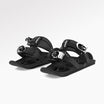













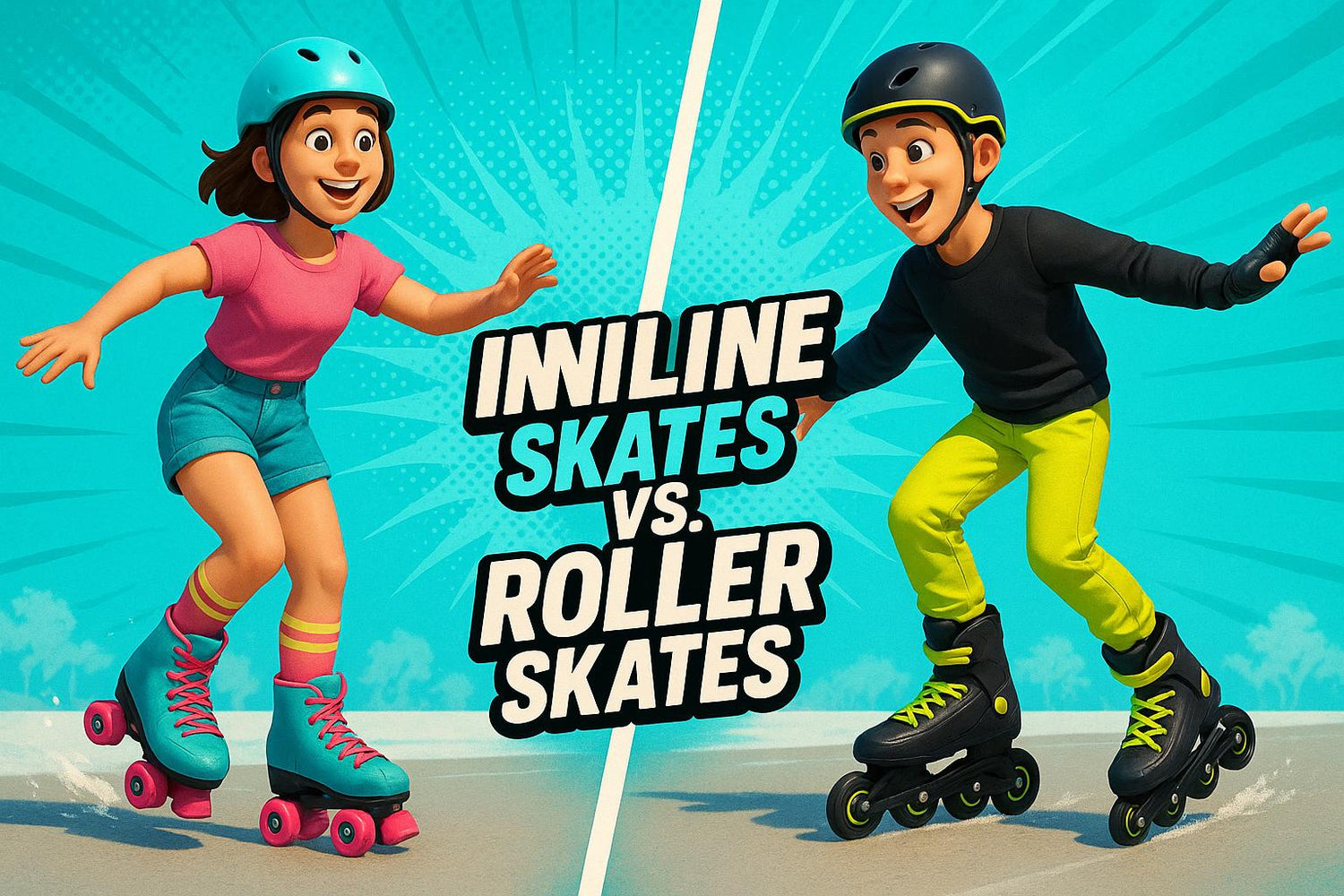
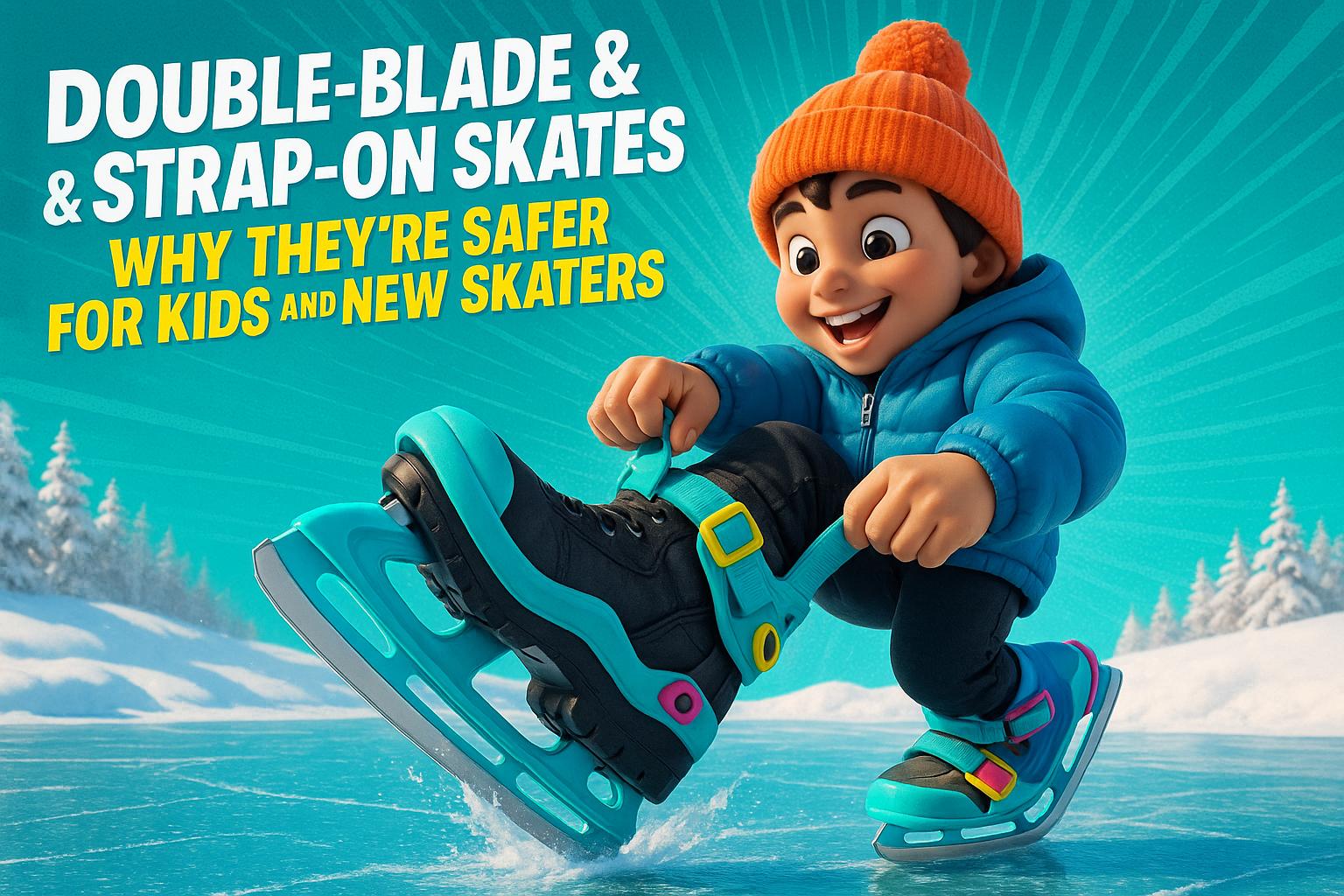
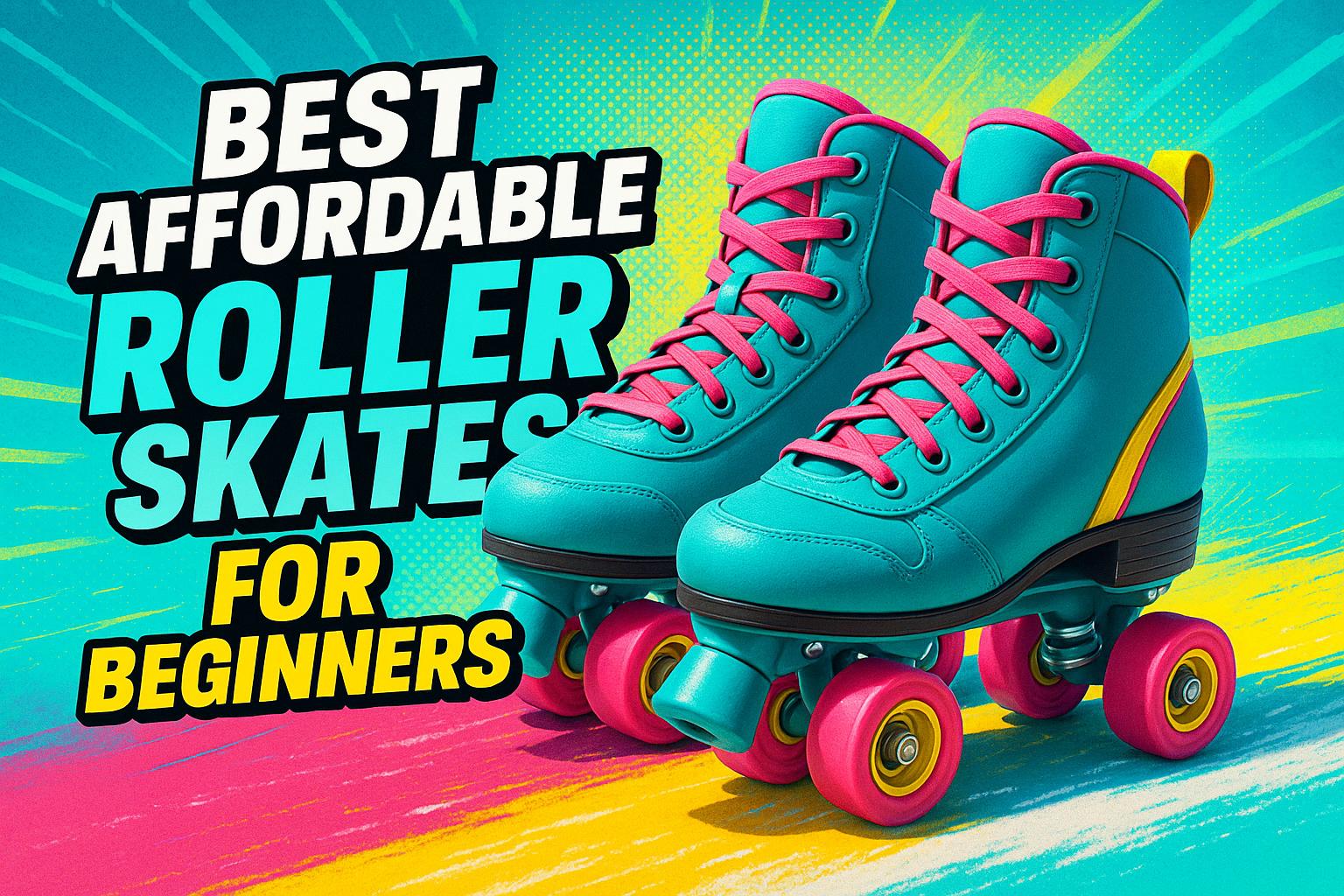




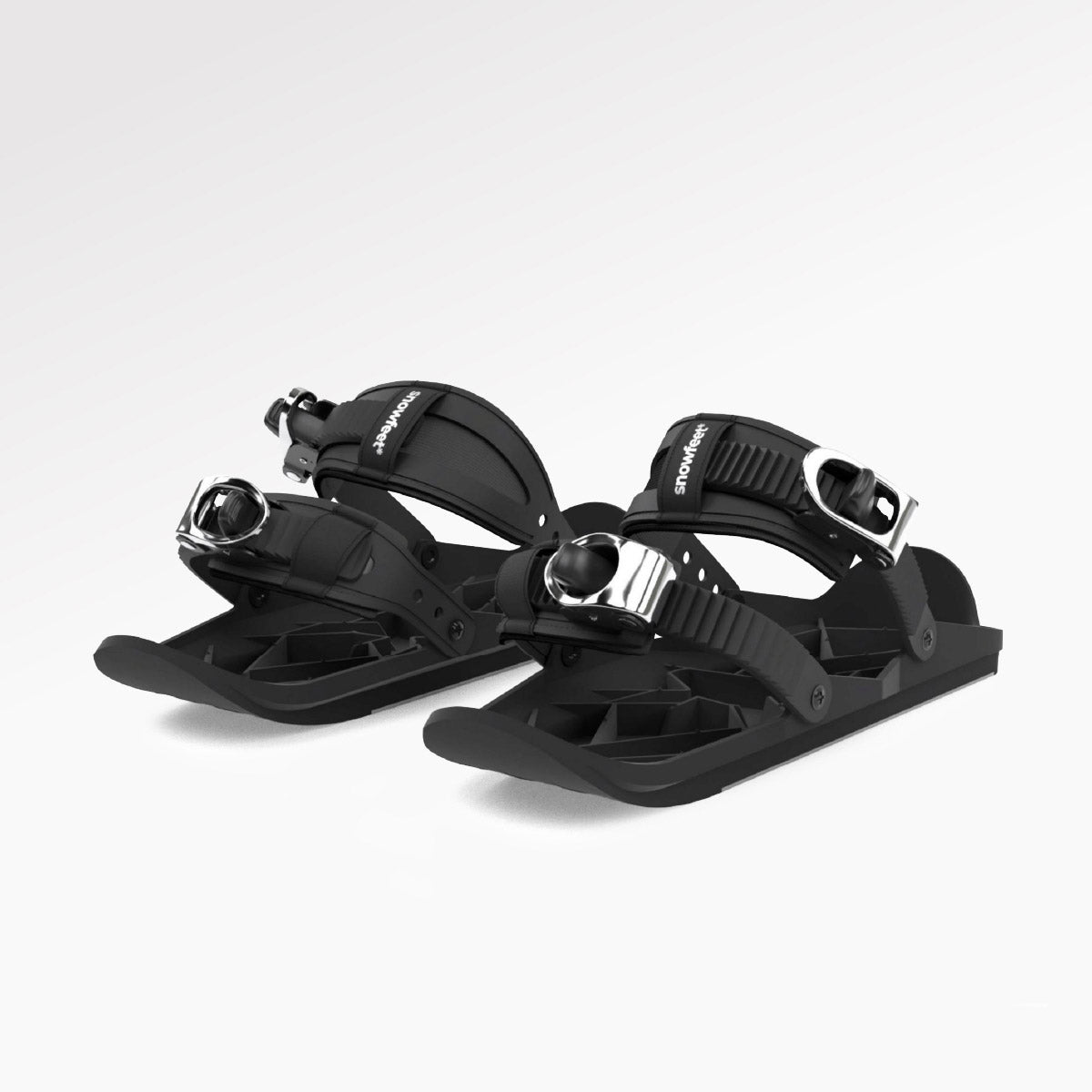
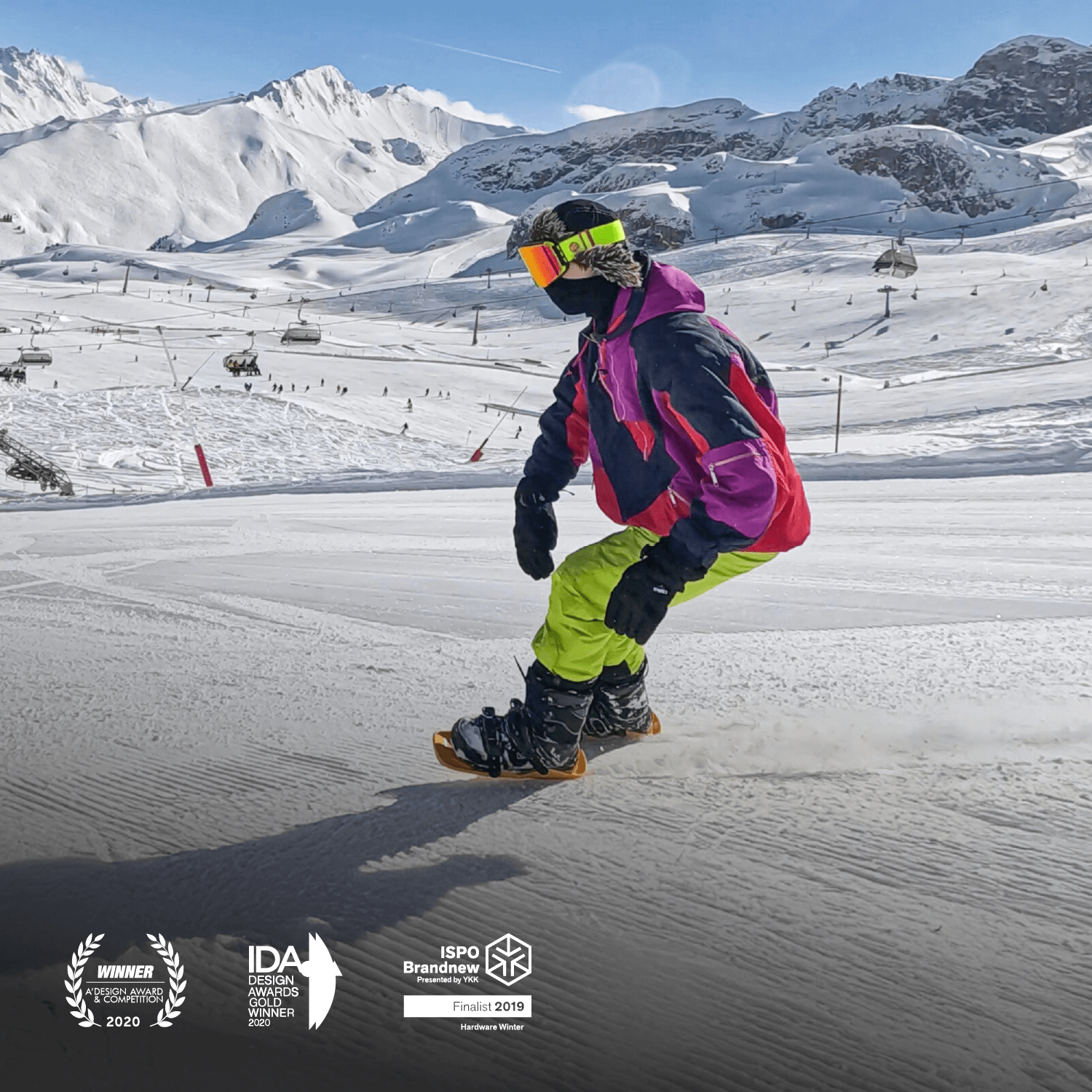




Leave a comment
This site is protected by hCaptcha and the hCaptcha Privacy Policy and Terms of Service apply.